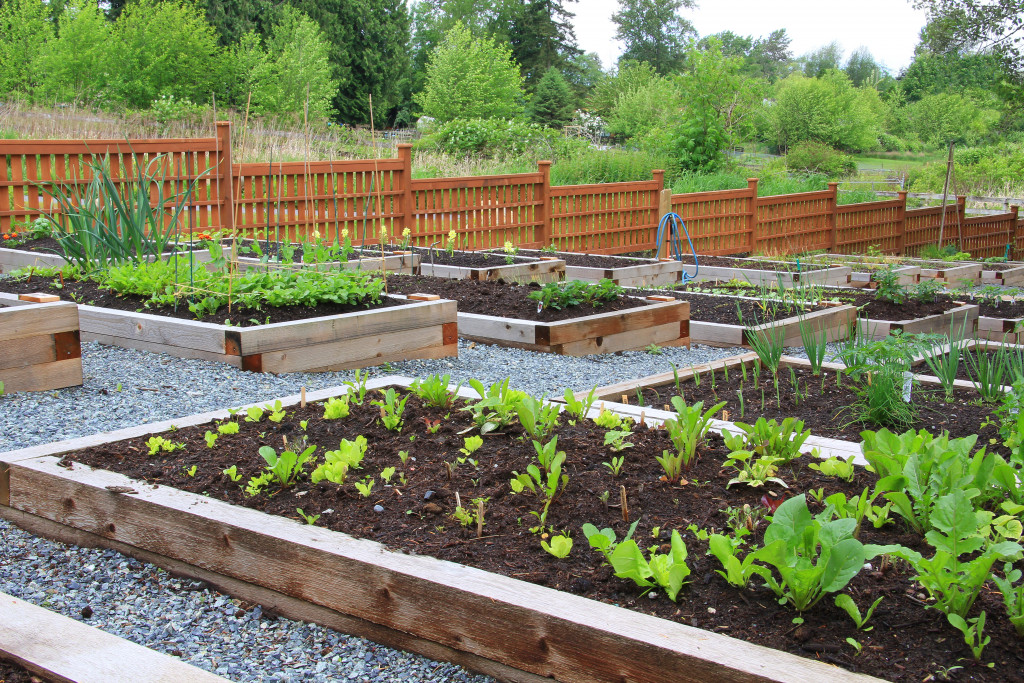Community gardens are crucial for the sustainability of a particular community. It helps reduce the carbon emissions of many households, which on average, produce about 48 metric tons of carbon dioxide yearly. So if a community garden can provide food for even one family, that significantly reduces carbon emissions. Here are four other ways community gardens can contribute to your community.
Hobby
Gardening is a popular hobby in the United States. It’s estimated that 55% of American households are involved in some form of gardening. Community gardens provide a space for individuals to come together and share their love of gardening.
Education
Community gardens can also serve as outdoor classrooms, where children can learn about the importance of sustainable food production and healthy eating habits. In addition, schools and community organizations often use community gardens as hands-on learning opportunities for students.
Beautification
In addition to producing fresh, local produce, community gardens can beautify a community. Planting flowers and other aesthetically pleasing plants can improve the appearance of a neighborhood and increase property values.
Community building
Bringing people together to work towards a common goal, such as maintaining a community garden, can enhance a sense of community and promote social interaction among neighbors. In addition, community gardens allow residents to connect and strengthen the community bond.
Community gardens provide numerous benefits for a community, from reducing carbon emissions and giving communities other benefits. However, starting one isn’t so simple. Here are some things you need for your community garden.
A Plot of Land
The first thing you need for your community garden is a plot of land. This can be provided by the local government or park district, or it could be a piece of vacant land you and your neighbors pitch in to purchase. Once you have your plot of land, it’s time to start planning what you will grow.

Seeds or Seedlings
The next thing you need for your community garden is seeds or seedlings. If you’re starting from scratch, you’ll need to buy seeds. But if you have some friends or neighbors who are already gardening, they may be able to donate some extra seedlings to get you started. Either way, make sure to get a variety of plants so that everyone in the community can find something they like. Additionally, you’ll need plants that are easy to grow. Here is a list of plants that can grow under almost any circumstances.
Tomatoes
If you want something resilient and can grow in a wide range of temperatures, tomatoes are a great choice. Plus, they can be used in various dishes and are always crowd-pleasers.
Peppers
Like tomatoes, peppers can also grow in various climates and have multiple uses in the kitchen. In addition, they come in different colors and heat levels, adding visual interest to your garden.
Carrots
Typically easy to grow, carrots are not only delicious but also nutritious. And their long roots make them perfect for container gardening or small plots of land.
Lettuce
Leafy greens like lettuce are fast-growing and can be planted multiple times throughout the season for continual harvest. Plus, salads are always a healthy option.
Soil Amendments
After you have your plot of land and your plants, the next thing you need is soil amendments. Soil amendments help improve the quality of the soil so that your plants can grow healthy and strong. Compost is an excellent soil amendment because it helps retain moisture and provides plant nutrients. If you don’t have compost access, other soil amendments are available at your local garden store.
Water
Another essential thing you need for your community garden is water. Most plants need at least an inch of water per week, so ensure you have a reliable source of water for your garden. If possible, set up a rain barrel to collect rainwater for watering your plants. This will save money on your water bill and help conserve water resources.
Roofing
Lastly, you’ll need some roofing material to provide shade and protect your plants from harsh weather. PVC roofing sheets are a popular option because they’re durable, affordable, and come in various colors to match your garden’s aesthetic. They can also be cut to fit the size and shape of your community garden plot.
Starting a community garden takes time and effort but can have numerous benefits for a neighborhood. By having a plot of land, plants, soil amendments, water, and roofing material, you’ll be well on your way to creating a thriving community garden. Happy gardening!




